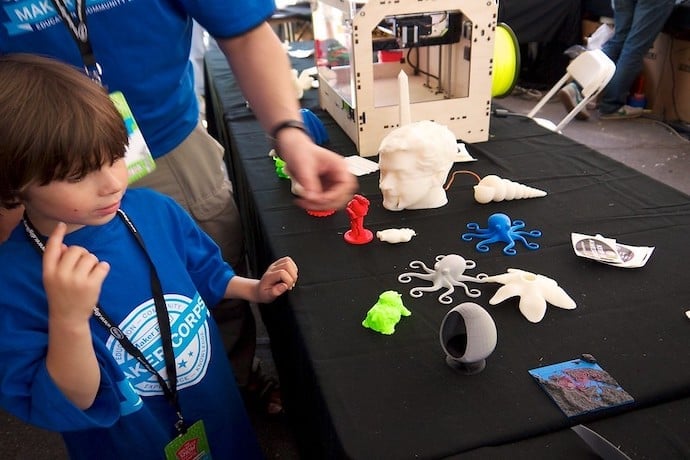I stood next to an 8th-grade student at the bank of 3D printers in my room watching her design turn into a misprint. It was clear to me before she printed it that her design would need a few miracles. She had designed it with too many 90-degree overhangs and small, thin arches; however, I encouraged her to print it anyway.
When the spaghetti coming out of the extruder became too entangled, I stopped the print. She was laughing, but also a little upset. When we talked it over, she revealed to me that the process left her feeling a little defeated. I tried to encourage her, though, by telling her that design is just like a game, and each failed design is another opportunity to play.
I can understand defeated feelings when a print goes bad. Watching designs go awry after investing significant time is never easy. That said, framing design as a game and failure as an opportunity are powerful tools to help young designers. Young people too often internalize failure, but when it comes to the world of play, they can be more resilient.
One possible reason is that humans by nature are game-players. Some even argue that playing games is essential to what it means to be human. In his 1938 book, Homo Ludens, Johan Huizinga defines games as an essential part of civilization and describes how play can be indistinct from culture. A judge wearing a wig while on the bench is an example of role play and costume play in a courtroom. When an artist crafts whimsical sculptures, they play on people’s expectations in the game of art.
According to Huizinga, play exists as a part of our daily lives, but not everything is play. It has a few necessary requirements. To be play, it must be free, it must not be “real life”, and play must create order by the end of the game. Similar to law or art, design is a type of game to be played by the designer. This type of thinking around design can lead to interesting results.
Play arises in design when the designer brainstorms fanciful solutions to a problem or when a “turn” ends in either success or failure. However, like many board games, design is a game meant to be played over and over again. When a 3D print turns to spaghetti on the build-plate or a prototype falls flat, designers start another iteration of the game hoping for better results.
When the Design Thinking process is framed as a game to be played, I find my students respond with less self-criticism and bounce back faster. Like Monopoly, Sorry, or Clue, each time you begin is another opportunity for a win. This can be helpful with the sometimes fraught process of 3D design and printing. While a bad print is frequently an obstacle my students encounter, they also run into issues like ideation freeze or difficulty empathizing with the user.
During a recent project-based lesson designing products to help stem the spread of the novel Coronavirus, I encouraged my students to move fast and follow an idea all the way to a prototype. If it didn’t work out, they could always start the game over. After all, design is just a game.
The students who thrived in this activity were open to this different type of thinking. Games can loosen up what can be a stressful process because they are fun and the stakes are low. One of my students even noted that “Back to the drawing board” is the sound of a new game of design just beginning. In such a fun and playful environment, even messy misprints no longer seem like a big deal.
Learn More
Play essential to design process
https://designthinkingformuseums.net/2016/10/31/why-play-is-essential-to-the-design-thinking-process
Serious play
https://en.wikipedia.org/wiki/Serious_play
Play and problem solving
https://bostonchildrensmuseum.blog/2013/11/21/1639/

